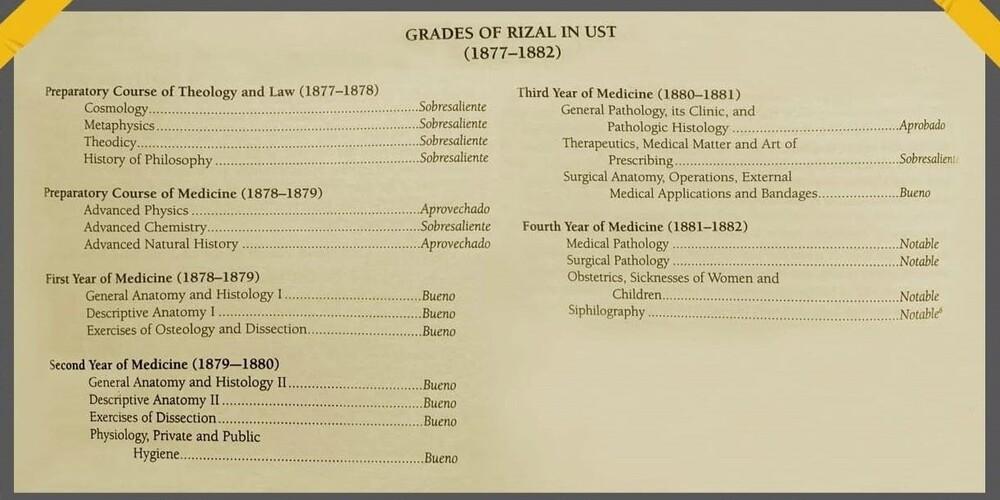LOOK: Dr. Jose Rizal’s grades in UST

Ever wondered what Dr. Jose Rizal's grades were like when he was still studying at the University of Santo Tomas (UST)?
Before he became the acclaimed national hero, physician, novelist, polyglot, and naturalist that we know today, he, too, was once a student who didn't always get the perfect grades.
In commemoration of the 128th anniversary of the martyrdom of Rizal, UST on Monday posted from its archives a photo of his transcript of grades from during his stay in the Dominican institution.
According to UST, Rizal spent much of his medical preparation in the UST Faculty of Medicine and Surgery. Prior to that, he took a preparatory course in Theology and Law from 1877 to 1878.
Based on his transcript of grades from 1877 to 1882, Rizal received six “Sobresaliente” or excellent grades in Cosmology, Metaphysics, Theodicy, History of Philosophy, Advanced Chemistry, and Therapeutics, Medical Matter and Art of Prescribing.
He also had eight “Bueno” (good) grades, four “Notable” and two “Aprovechado" (very good), and one “Aprobado" (passing grade) in his 21 subjects.
“After taking the pre-law course in 1877, ‘he changed his mind—or his parents did—and opted for the career of medicine,’” the UST said, citing historian Fr. Fidel Villarroel, O.P.'s book, “A History of the University of Santo Tomas."
“While several of Rizal’s classmates ‘one by one fell by the roadside,’ by the fourth year, only seven medical students of the year remained, and Rizal was one of them, ending that year in second place,’” it added.
In 1882, Rizal went to Madrid where he continued to study medicine at the Universidad Central de Madrid. While studying, he was also writing "Noli Me Tangere" and taking up painting at the Escuela de Bellas Artes de San Fernardo nearby.
He earned his licentiate in medicine in 1884 and a licentiate in philosophy later on.
Rizal wrote the novels "Noli Me Tangere" and "El Filibusterismo" as he advocated for political reforms during the Spanish occupation. He was convicted of rebellion and was executed in Bagumbayan, now Rizal Park or Luneta, on December 30, 1896.
His sacrifice and heroism are commemorated on the anniversary of his death.
— Giselle Ombay/CDC, GMA Integrated News




